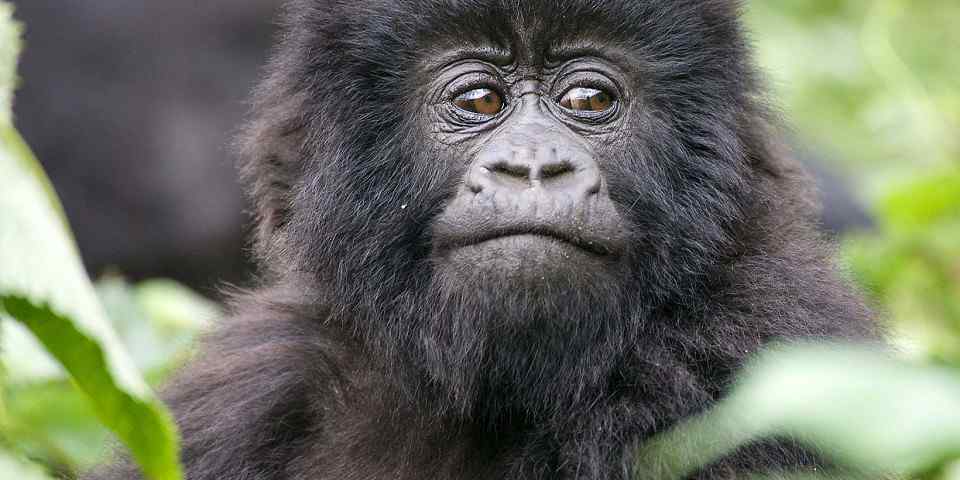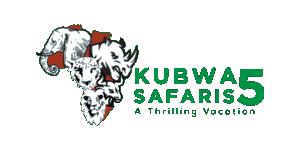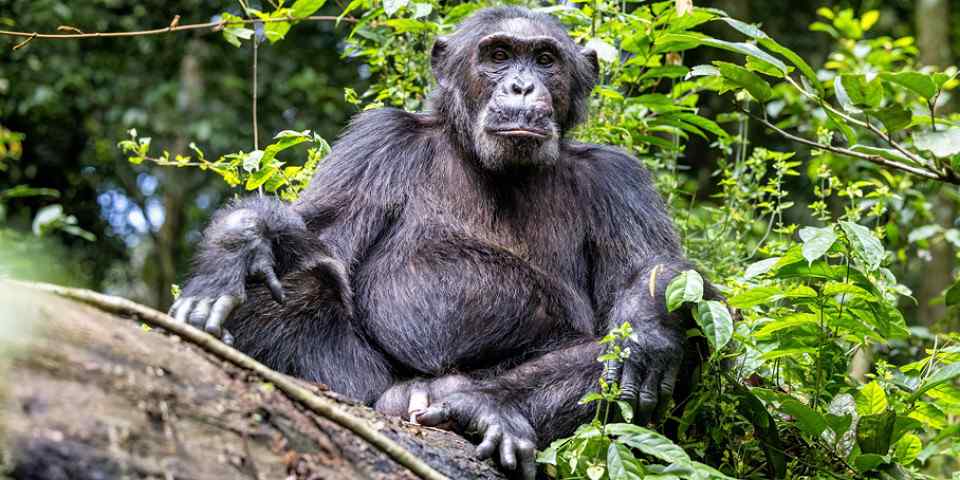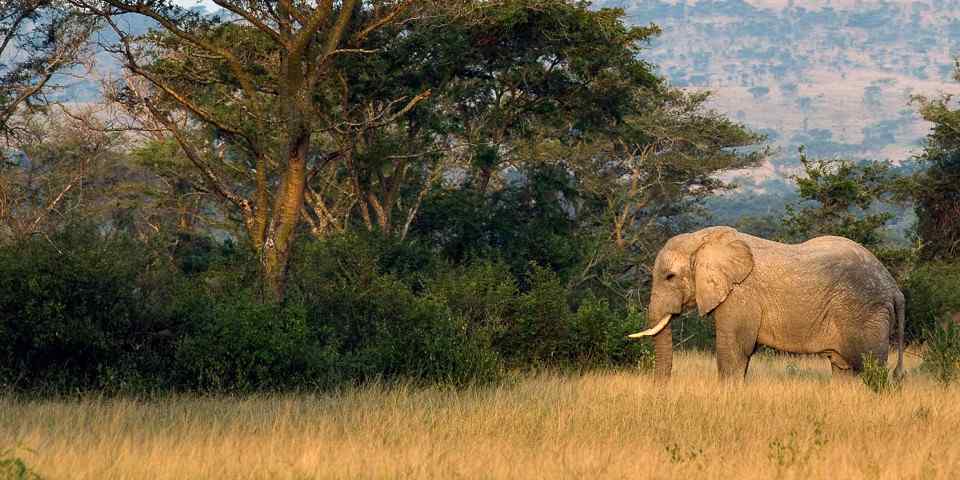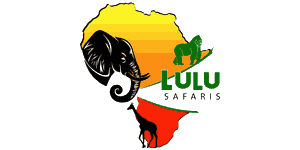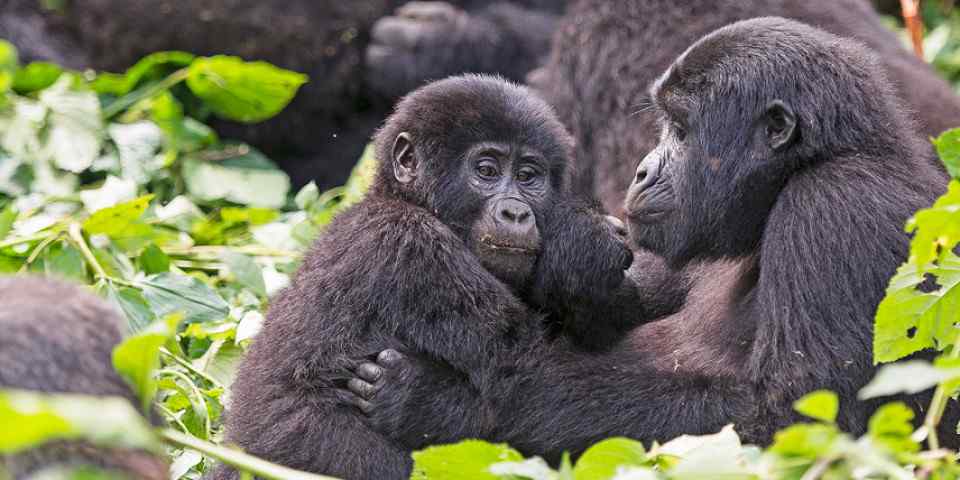Tour Length
Rates in USD $ – Change Currency
Per person, excl. international flightsOperator Rating
Other Tour Features
Filter by Operator
Filter by Accommodation
Uganda Chimpanzee Trekking Tours
Chimp trekking is one of the highlights on any Uganda holiday. Imagine the adventure of heading out to track these great apes in dense rainforest. Seeing chimps in their natural habitat is a real privilege. As we share 98.8% of our DNA with chimpanzees, they are our closest relatives. Like humans, they tend to have strong personalities, and their expressive faces make their identities very recognizable to us. Their intelligence and social behavior are endlessly fascinating to observe, and no two visits to a community are the same. You might hear them before you see them. Listening to a chorus of vocalizations, called pant-hooting, at close range is a spine-tingling experience you’ll never forget.
-

7-Day Gorilla Chimpanzees and Wildlife Tour
$2,310 pp (USD)
Uganda: Private tour
Mid-range Lodge & Guest HouseYou Visit: Entebbe (Start), Lake Victoria, Kibale NP (Chimps), Bigodi Wetland (Kibale NP), Queen Elizabeth NP, Ishasha Sector (Queen Elizabeth NP), Bwindi NP (Gorillas), Lake Mburo NP, Entebbe (End)

Dav Safaris
5.0/5 – 84 Reviews
-
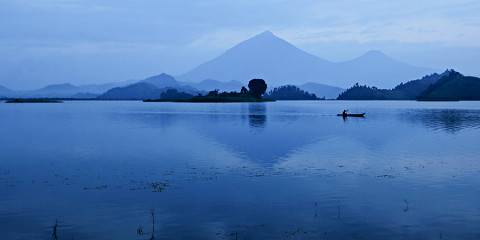
3-Day Uganda Gorillas and Chimp Trek at Kalinzu Forest
$2,013 pp (USD)
Uganda & Rwanda: Shared tour (max 4 people per group)
Mid-range LodgeYou Visit: Kigali (Start), Queen Elizabeth NP, Kalinzu FR (Chimps), Mgahinga Gorilla NP (Gorillas), Kigali (End)

Bamboo Ecotours
5.0/5 – 103 Reviews
-
Top Rated Operator

14-Day Customized Safari Holiday & Tour of Rwanda, Uganda
$5,185 pp (USD)
Rwanda & Uganda: Private tourBudgetLodge & Tented Camp
You Visit: Kigali (Start), Kigali Airport (Kigali), Nyungwe NP (Chimps), Volcanoes NP (Gorillas), Bwindi NP (Gorillas), Queen Elizabeth NP, Kibale NP (Chimps), Murchison Falls NP, Ziwa Rhino and Wildlife Ranch, Mabamba Swamp, Entebbe (End)

Home To Africa Tours and Travel
5.0/5 – 278 Reviews
-
Best Seller

5-Day Gorillas, Chimpanzees and Tree-Climbing Lions
$2,079 pp (USD)
Uganda: Private tour
Mid-range Lodge & ResortYou Visit: Entebbe (Start), Queen Elizabeth NP, Kyambura Gorge (Chimps), Bwindi NP (Gorillas), Lake Bunyonyi, Entebbe (End)
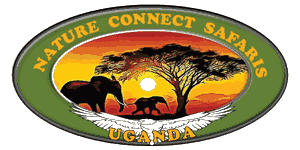
Nature Connect Safaris Uganda
4.9/5 – 39 Reviews
-
Best Seller
![8-Day Uganda Luxury and Big Five Wildlife Safari]()
8-Day Uganda Luxury and Big Five Wildlife Safari
$5,005 pp (USD)
Uganda: Private tourLuxuryLodge & Hotel
You Visit: Entebbe (Start), Kibale NP (Chimps), Queen Elizabeth NP, Bwindi NP (Gorillas), Entebbe Airport (End)

Pamoja Tours and Travel (Entebbe, UG)
4.8/5 – 49 Reviews
-
Top Rated Operator
![8-Day Uganda Flying Safari]()
8-Day Uganda Flying Safari
$10,571 to $15,303 pp (USD)
Uganda: Private tourLuxuryLodge & Hotel
You Visit: Entebbe (Start), Murchison Falls NP, Kyambura Gorge (Chimps), Bwindi NP (Gorillas), Entebbe (End)

Wayfairer Travel

4.9/5 – 149 Reviews
-
![10-Day Best of Africa Adventure Vacation]()
10-Day Best of Africa Adventure Vacation
$3,933 pp (USD)
Uganda: Private tour
Mid-range Lodge & ResortYou Visit: Entebbe (Start), Kampala (City), Murchison Falls NP, Kibale NP (Chimps), Queen Elizabeth NP, Bwindi NP (Gorillas), Lake Bunyonyi, Lake Mburo NP, Entebbe Airport (End)

Africa Adventure Vacations

5.0/5 – 91 Reviews
-
![3-Day Kibale Breathtaking Chimpanzee Tour]()
3-Day Kibale Breathtaking Chimpanzee Tour
$880 to $1,100 pp (USD)
Uganda: Private tourBudgetCamping
You Visit: Entebbe (Start), Kibale NP (Chimps), Entebbe Airport (End)

Kubwa Five Safaris

5.0/5 – 127 Reviews
-
![6-Day Amazing Wildlife & Gorilla Trekking Safari]()
6-Day Amazing Wildlife & Gorilla Trekking Safari
$2,200 pp (USD)
Uganda: Private tour
Mid-range Lodge & Guest HouseYou Visit: Entebbe (Start), Bwindi NP (Gorillas), Queen Elizabeth NP, Kalinzu FR (Chimps), Entebbe (End)

Kajie Safaris
5.0/5 – 108 Reviews
-
![7-Day Murchison Falls, Chimps & Gorilla Trekking]()
7-Day Murchison Falls, Chimps & Gorilla Trekking
$2,572 pp (USD)
Uganda: Private tour
Mid-range Lodge & Guest HouseYou Visit: Entebbe (Start), Ziwa Rhino and Wildlife Ranch, Murchison Falls NP, Kibale NP (Chimps), Queen Elizabeth NP, Bwindi NP (Gorillas), Entebbe Airport (End)

Tubale Safaris
5.0/5 – 34 Reviews
-
![3-Day Queen Elizabeth National Park and Chimp-Tracking]()
3-Day Queen Elizabeth National Park and Chimp-Tracking
$795 pp (USD)
Uganda: Private tourBudgetLodge
You Visit: Entebbe (Start), Queen Elizabeth NP, Entebbe Airport (End)

Primate Safaris
4.7/5 – 12 Reviews
-
![3-Day Tour to Queen Elizabeth National Park]()
3-Day Tour to Queen Elizabeth National Park
$1,045 pp (USD)
Uganda: Shared tour (max 10 people per vehicle)BudgetLodge
You Visit: Entebbe (Start), Queen Elizabeth NP, Entebbe (End)

East African Jungle Safaris
5.0/5 – 136 Reviews
-
![5-Day Gorilla Trekking Chimp Trekking & Wildlife Safari]()
5-Day Gorilla Trekking Chimp Trekking & Wildlife Safari
$2,145 pp (USD)
Uganda: Private tour
Mid-range Lodge & BandaYou Visit: Entebbe (Start), Queen Elizabeth NP, Kazinga Channel (Queen Elizabeth NP), Ishasha Sector (Queen Elizabeth NP), Bwindi NP (Gorillas), Entebbe (End)

Lulu Safaris Uganda
5.0/5 – 77 Reviews
-
![12-Day Gorillas, Chimpanzee and Wildlife Adventure]()
12-Day Gorillas, Chimpanzee and Wildlife Adventure
$3,850 pp (USD)
Uganda: Private tour
Mid-range Camping & LodgeYou Visit: Kampala (Start), Entebbe Airport (Entebbe), Murchison Falls NP, Kibale NP (Chimps), Queen Elizabeth NP, Bwindi NP (Gorillas), Lake Bunyonyi, Lake Mburo NP, Entebbe (End)

Great Explorers Safaris
5.0/5 – 7 Reviews
-
![10-Day Primates of Uganda - Luxury]()
10-Day Primates of Uganda - Luxury
$5,750 to $5,950 pp (USD)
Uganda: Private tourLuxuryLodge & Resort
You Visit: Entebbe (Start), Murchison Falls NP, Budongo Forest (Chimps), Queen Elizabeth NP, Bwindi NP (Gorillas), Lake Mburo NP, Entebbe (End)

let's Go Travel: Silverback Expeditions
5.0/5 – 21 Reviews
-
Top Rated Operator
![8-Day Experience Gorillas, Chimps and Big 5 Game Drives]()
8-Day Experience Gorillas, Chimps and Big 5 Game Drives
$2,860 pp (USD)
Uganda: Private tour
Mid-range Lodge & Tented CampYou Visit: Entebbe (Start), Murchison Falls NP, Kibale NP (Chimps), Queen Elizabeth NP, Bwindi NP (Gorillas), Lake Bunyonyi, Entebbe (End)

NGONI Safaris Uganda
5.0/5 – 140 Reviews
-
![10-Day Mid Luxury Uganda Gorilla and Wildlife Safari]()
10-Day Mid Luxury Uganda Gorilla and Wildlife Safari
$5,390 to $5,445 pp (USD)
Uganda: Private tourLuxuryLodge & Guest House
You Visit: Entebbe (Start), Murchison Falls NP, Kibale NP (Chimps), Queen Elizabeth NP, Bwindi NP (Gorillas), Entebbe (End)

Ganyana Safaris Uganda
4.8/5 – 25 Reviews
-
![8-Day Great Apes & Wildlife Safari in Uganda]()
8-Day Great Apes & Wildlife Safari in Uganda
$6,199 to $6,419 pp (USD)
Uganda: Private tour
Mid-range Lodge & Tented CampYou Visit: Entebbe (Start), Bwindi NP (Gorillas), Queen Elizabeth NP, Kibale NP (Chimps), Entebbe Airport (End)

Steady Safaris
4.9/5 – 37 Reviews
-
![7-Day Uganda Gorillas, Chimps Tracking & Wildlife Safari]()
7-Day Uganda Gorillas, Chimps Tracking & Wildlife Safari
$2,783 pp (USD)
Uganda: Private tour
Mid-range Lodge & Tented CampYou Visit: Entebbe (Start), Entebbe Airport (Entebbe), Bwindi NP (Gorillas), Queen Elizabeth NP, Kibale NP (Chimps), Entebbe (End)

Uganda Family Tours & Travel
5.0/5 – 52 Reviews
-
![10-Day Best of Uganda's Wild Life Safari]()
10-Day Best of Uganda's Wild Life Safari
$3,846 pp (USD)
Uganda: Private tour
Mid-range Lodge & Guest HouseYou Visit: Entebbe (Start), Kampala (City), Ziwa Rhino and Wildlife Ranch, Murchison Falls NP, Kibale NP (Chimps), Queen Elizabeth NP, Bwindi NP (Gorillas), Lake Mburo NP, Entebbe (End)

Hail Tours Uganda
4.9/5 – 106 Reviews
6 Questions About Uganda Chimp Trekking Tours

Answered by
Ariadne van Zandbergen
Ariadne is a renowned Africa expert. She and her husband form a team who write and update many Bradt guides, including the guide to Uganda. She first visited Uganda 25 years ago. She has been privileged to track chimps in Uganda many times.› More about Ariadne
6 Questions About Uganda Chimp Trekking Tours
 Ariadne van Zandbergen
Ariadne van Zandbergen
How does chimp trekking in Uganda compare to other countries?
“Although there are several African countries that offer chimp trekking, the activity is most popular in Uganda. Many visitors to the country go chimp trekking at least once. There are several places to do this, and the activity is easily slotted into any tour of the country. The number-one place for chimp trekking is Kibale National Park. Sightings are usually very good here, but visitor numbers can be high. For a more exclusive experience, there are several good alternatives. These are the beautiful Kyambura Gorge in Queen Elizabeth National Park, the community-run Kalinzu Forest Reserve bordering the same park, and the vast Budongo Forest near Murchison Falls National Park. Tanzania offers great chimp trekking in Gombe and Mahale Mountains National Parks, on the shore of Lake Tanganyika. It’s very special in these remote destinations, but getting here is either very expensive or time-consuming. This makes chimp trekking in Tanzania much less popular. Nyungwe National Park in Rwanda is a less-known chimp trekking destination. This high-altitude forest is remarkably accessible and is home to 13 primate species. The park is worth visiting for its natural beauty, forest hikes and biodiversity alone, and the opportunity to track chimps is a bonus. Chimp trekking in Rwanda is recommended, but sightings are more hit-and-miss than in Uganda or Tanzania.”
1How do a chimp trek and a gorilla trek in Uganda compare?
“Chimp trekking is vastly underrated compared to gorilla trekking. This may be due to the huge size of gorillas, which makes these gentle giants so overwhelming to be around. But the experiences are similar. On both activities, your ranger will give you a briefing before you head out with a small group of visitors. Once you’ve found the primates, you’ll get a full hour to observe them. The main difference is that gorillas are overall less active. The young ones might play, but the adults usually feed or rest. Whereas a group of gorillas always stays together, chimp communities are more fluid. They often break up into subgroups, which spend time apart to reunite later. There always seems to be something going on in a chimp community: an alpha male trying to take over, a youngster throwing a tantrum, males patrolling their territory and, occasionally, a hunt. Although this makes chimp watching very rewarding, it also makes it trickier than spending time with gorillas. When on the move, chimps are difficult to follow. Their nimble bodies move easily through the vegetation whereas we struggle to get through. Chimps spend more time high up in trees compared to gorillas and that can make viewing more difficult too. Having said that, the guides work really hard to ensure you get a good sighting and a few good photo opportunities. Last but not least is the price difference: the fee for chimp trekking in different sites ranges from US$50 to US$200, which is a lot cheaper than a gorilla trekking permit.”
2What fitness level is required?
“You will require a reasonable amount of fitness for chimpanzee trekking. Every day is different though, and some days the trek is more strenuous than other days. Chimps have big territories, and you might be lucky to find them after 30 minutes or it might take two hours. You get to spend an hour with the chimps and this experience is very variable too. They might be stationary, feeding or resting, or they might be on the move. Contrary to gorillas, chimpanzees move very fast through the forest undergrowth and trying to keep up with them can be a great challenge. The unpredictability adds to the adventure and most people walk away with an amazing experience. Whatever your fitness, you’ll need proper gear. Wear good hiking shoes, a lightweight rain jacket and long trousers. A walking stick helps on slippery slopes. If you are uncertain of your fitness, you can hire a porter. They will carry your bag with water, snacks and a camera, and they are also great at helping you navigate the difficult terrain.”
3Is chimp trekking in Uganda safe?
“Chimpanzee trekking in Uganda is very safe. The chimpanzees are very habituated and they know that humans pose no threat to them. You’ll be given a safety briefing before you head out and one of the rules is to maintain the recommended 8m/26ft distance from the chimps. As long as you listen to the instructions given by your guide, you’ll have nothing to worry about. Furthermore, Uganda as a country is a safe travel destination in our opinion. Crime in any of the parks or reserves is very rare. As is the case all over the world, there is some crime in the cities, but as long as you book with a reputable operator, you should be fine.”
› More information on safety in Uganda 4How much will this trip cost?
“Chimp trekking costs US$200 in Kibale National Park, US$50 in Kyambura Gorge, or US$130 in Kalinzu Forest Reserve or Budongo Forest. When booking an organized tour, these fees are included in the overall price. The cost of a 3-day trip including chimp trekking in Kibale starts at about US$850 per person. A 10-day Uganda highlights tour, including chimp and gorilla trekking, as well as savannah safaris in Queen Elizabeth and Murchison Falls National Parks, will start at around US$3,000 per person. These prices are just guidelines as they depend on the level of accommodations on your tour. Use the filters on the SafariBookings website to select budget, mid-range and luxury options. Shared camping tours are cheapest, but there are budget private tours available too. Mid-range accommodations range from no-frills hotels and guesthouses to simple tented camps, but there are some lavish luxury establishments in the country too.”
5Are chimp sightings guaranteed?
“The success rate of finding the chimps in Uganda depends on where you go on a chimp trek. Although they are habituated to human presence, the chimpanzees are totally wild. They move daily in search of food and they make a new nest every night wherever they end up. All in all, these nimble primates are less sedentary than gorillas and sightings are altogether more variable. In Kibale, the odds of a sighting are higher than 90%. With a lot of visitor activity as well as research groups operating here, the guides usually have a good idea of where the chimps are at any time. Kalinzu Forest is almost as reliable as Kibale. Kyambura Gorge and Budongo Forest are less reliable, but the success rate is still better than 80%, and if you do get to see chimps, the experience is just as rewarding.”
6Uganda Reviews

Sue is an award-winning writer who specializes in African travel and conservation. She writes for national newspapers, magazines, Rough Guides and Lonely Planet.
Great Apes, Great Landscapes, Great Adventures
Most people understandably come to Uganda for its gorillas. Almost half of the world’s population of around 1,060 mountain gorillas lives in Uganda’s Bwindi Impenetrable and Mgahinga Gorilla national parks, and spending that precious...

Mark is a travel writer who grew up in Africa and has written over 700 titles for Condé Nast Traveller, Travel Africa, BBC Wildlife and others.
Fantastic Wildlife and Some of the Friendliest People in Africa Make Uganda Unbeatable
I spent a month travelling around Uganda with a self-drive, expedition-prepared Landcruiser and visited almost every national park in the country. Uganda was a revelation! I had not expected such a richness of wildlife nor such great...
 ES
ES
Unique experiance Uganda
After having been on Safari in Kenia and in South Afrika, we choose Uganda as a destination to experiance what we saw as the ultimate highlite in Safaris…… the chimpansee and Gorilla trekking in Uganda. We visited a week end of April,...
 US
US
A Lush Oasis with So Much to See
My wife and I did a 5 day Uganda safari. Our guide, Francis, picked us up from our hotel in Entebbe and we drove several hours to start our trip at Queen Elizabeth National Park (QENP). Even though we visited during the rainy season, we...
 US
US
Uganda is a perfect place to see the wild beauty of Africa, but also a very hospitable people!
We’ve been coming for years to Uganda to work among people in rural, impoverished villages. But this was the first time we had the opportunity to explore some of the natural beauty of Uganda. We’ve spent vacations in France, Hungary,...
 US
US
A country with a rich diversity of landscapes, people, and wildlife.
I explored Uganda for 12 days with Buyaga Safaris. The country is very diverse the culture, landscape, and wildlife can change a lot when traveling from one region to the next. The biggest highlights for myself as a wildlife photographer...

